The Black-faced Woodswallow (Artamus cinereus) are found throughout Australia, although not so common along the eastern coast. They are birds of wide open spaces and can often be seen in agricultural regions and arid desert zones. They are native to Australia, New Guinea and the Sundra Islands.
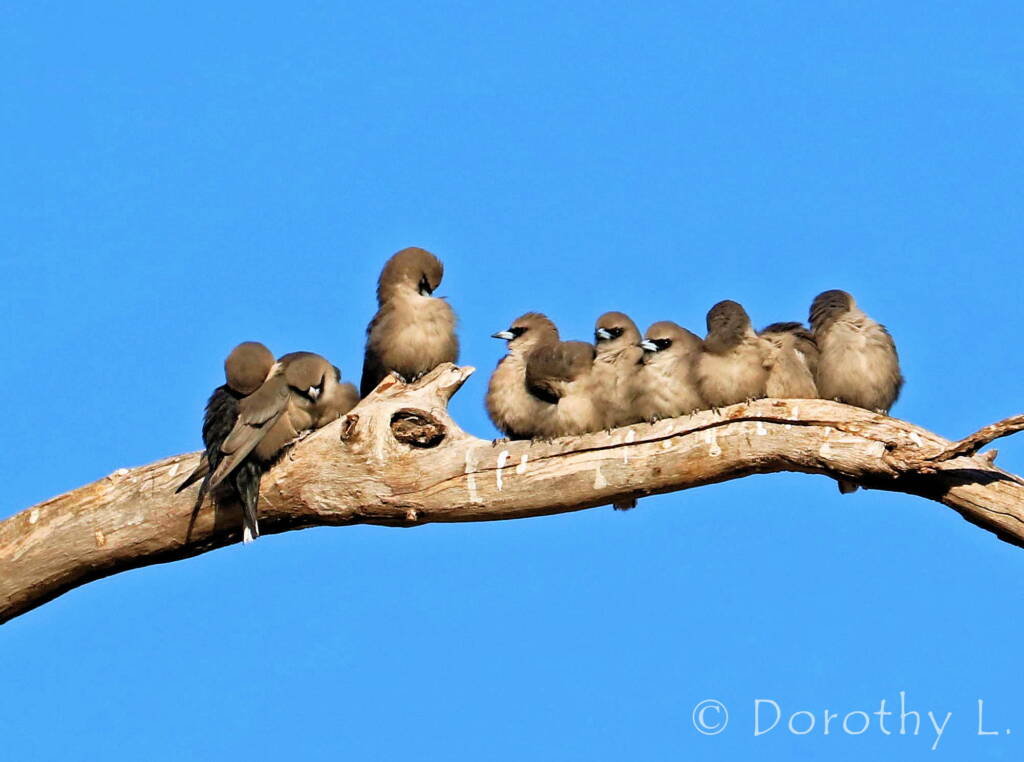
This wonderful species are quite social, with the Black-faced Woodswallow often presented in that classic photograph of a group of them sitting together on branches and overhead lines. This is a distinctive behaviour, as they roost in a cluster together, especially in a protected hollow.

This species have a blue-grey beak with a grey-black tip and a black faced mask that extends from the base of the bill to and around the eyes. They have an smokey ash grey plumage upper, with the breast being a lighter grey and they have darker wings, with silver underwings. The tail feathers are black with white tip, although the race cinereus has a black undertail, whilst the race albiventris (A c dealbatus) has a white undertail in north-eastern Queensland.
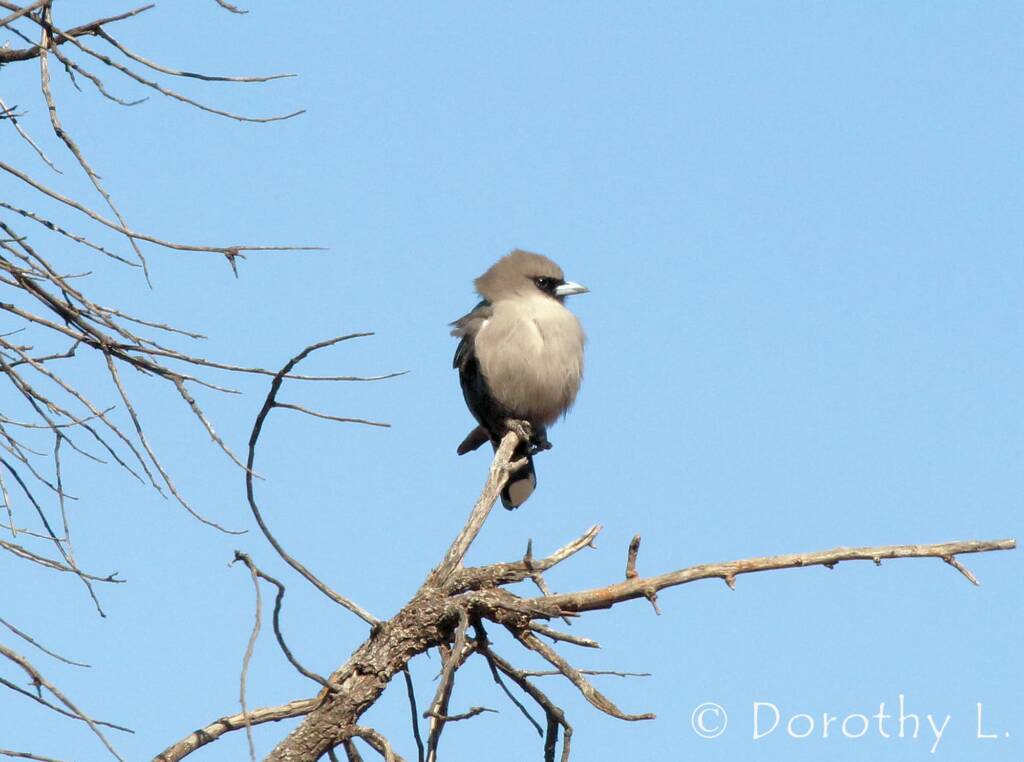


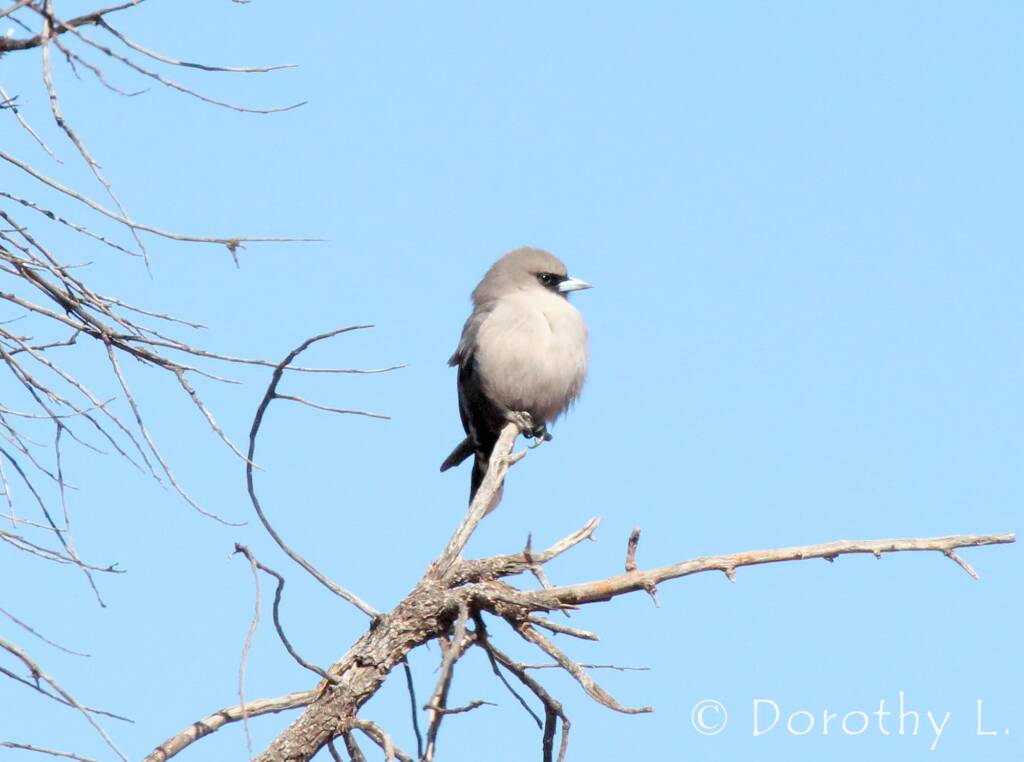
There are four defined subspecies of the Back-faced Woodswallows, that are mainly identified by the black or white colouration of their tail vents. The black-vented tails subspecies on A c melanops are found in northern Australia and A c cinereus found in south west Australia. The white-vented subspecies of A c normani and A c dealbatus are found in the Cape York Peninsula and northern Queensland.
The sexes are similar in colouration and both parents will look after the nest, a family group are also known to help.
Juvenile birds are mainly brown, with extensive buff streaking, whilst the the underparts are a light buff-brown. They have a pale brown to pale yellow bill.

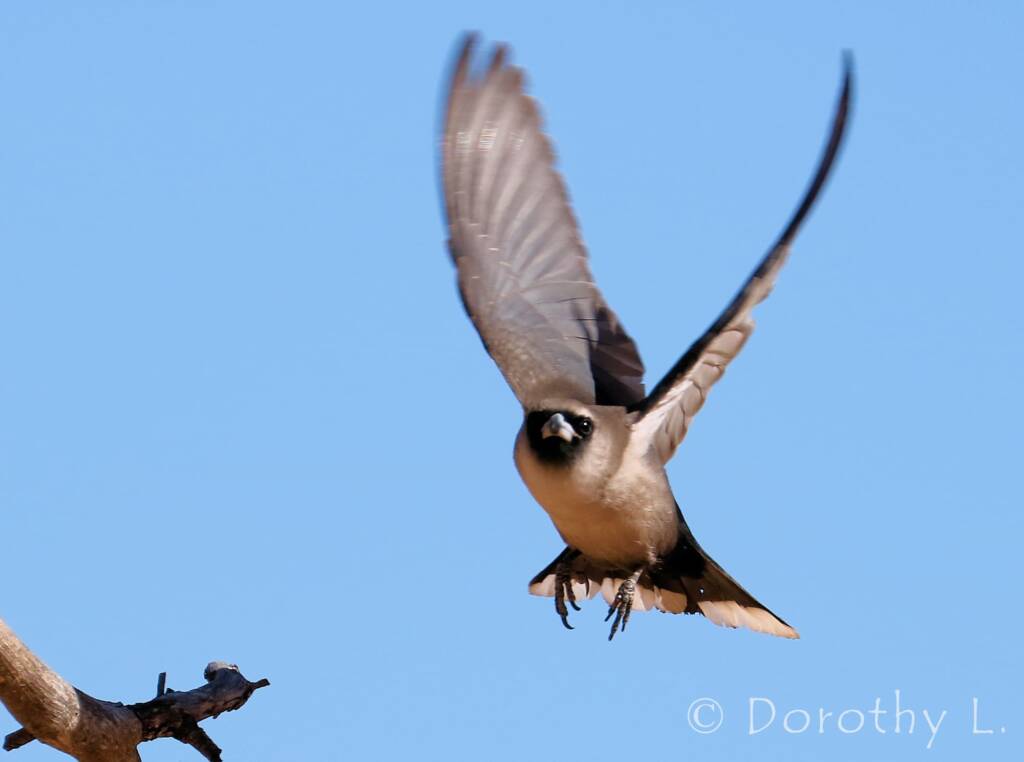
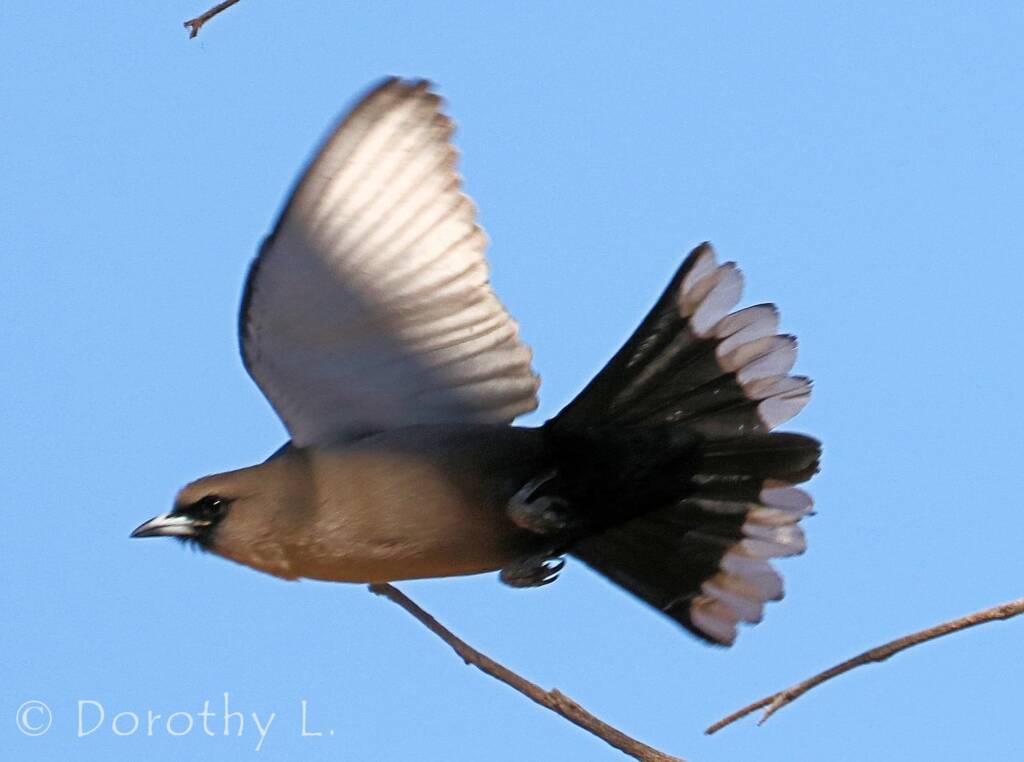

In the Northern Territory, the Black-faced Woodswallow is often associated with the Hooded Parrots, often being seen foraging together. It appears that the parrots use the Black-faced Woodswallow as sentinels to warn them of any approaching predators.

Check out some of our images of the Black-faced Woodswallow at the Alice Springs Desert Park.


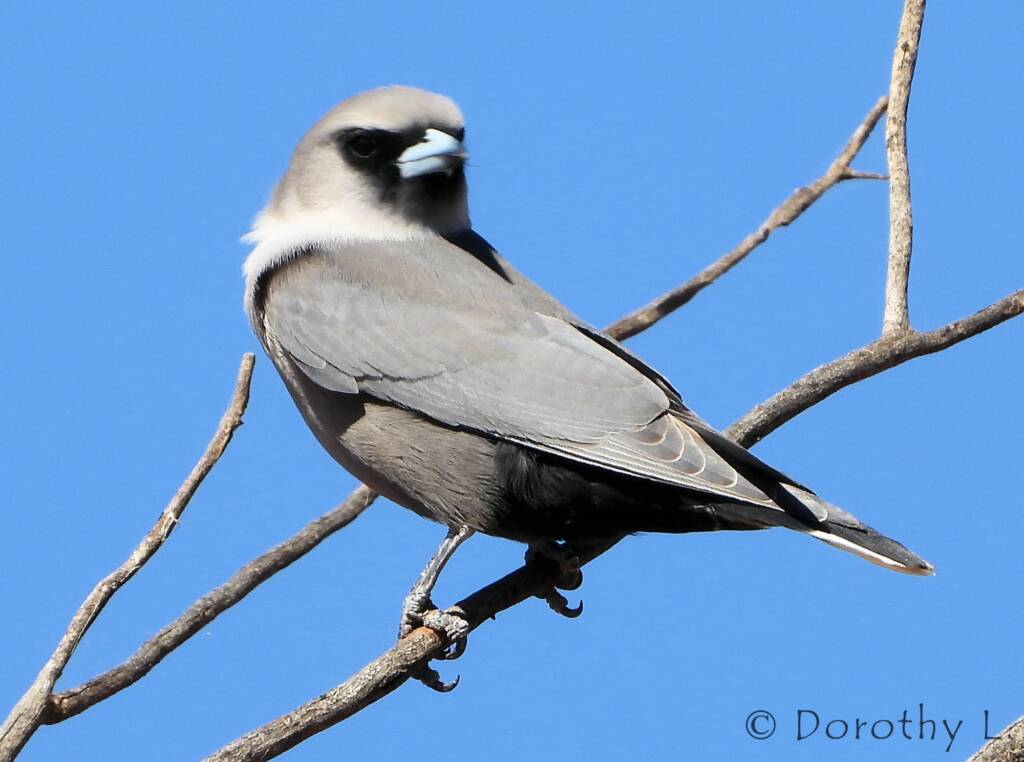
- Scientific classification
- Kingdom: Animalia
- Phylum: Chordata
- Class: Aves
- Order: Passeriformes
- Family: Artamidae
- Genus: Artamus
- Species: A. cinereus
- Binomial name: Artamus cinereus
- Subspecies:
- A.c. normani
- A.c. dealbatus
- A.c. cinereus
- A.c. melanops
Footnote & References
- Black-faced Woodswallow, BirdLife Australia, https://www.birdlife.org.au/bird-profile/black-faced-woodswallow
BirdsApostlebird Australasian Darter Australasian Figbird Australasian Gannet Australasian Grebe Australasian Pipit Australasian Robins Australasian Shoveler (Spatula rhynchotis) Australasian Wrens Australian Babblers Australian Bustard Australian Chats Australian Magpie Australian Pelican Australian Pratincole (Stiltia isabella) Australian White Ibis Bassian Thrush Black-faced Cormorant Black-faced Woodswallow Black Swan Bowerbirds Brolga Brown Songlark Channel-billed Cuckoo Cinnamon Quail-thrush Cormorants Cuckooshrikes and Allies Dotterels Lapwings Plovers Doves & Pigeons Emu Fairy Martin Finches Grey Fantail Grey Teal Honeyeaters Kingfishers Little Friarbird Little Grassbird Magpie-lark Masked Woodswallow Noisy Pitta Olive Whistler Paradise Riflebird Pardalotes Parrots Pheasant Coucal Pied Butcherbird Rainbow Bee-eater Raptors Rufous Fantail Redthroat Rufous Bristlebird Silver-crowned Friarbird Torresian Crow Waders Welcome Swallow (Hirundo neoxena) Whiskered Tern (Chlidonias hybrida) White-browed Woodswallow White Capped Noddy White-faced Heron White-necked Heron Willie Wagtail Yellow-throated Scrubwren
